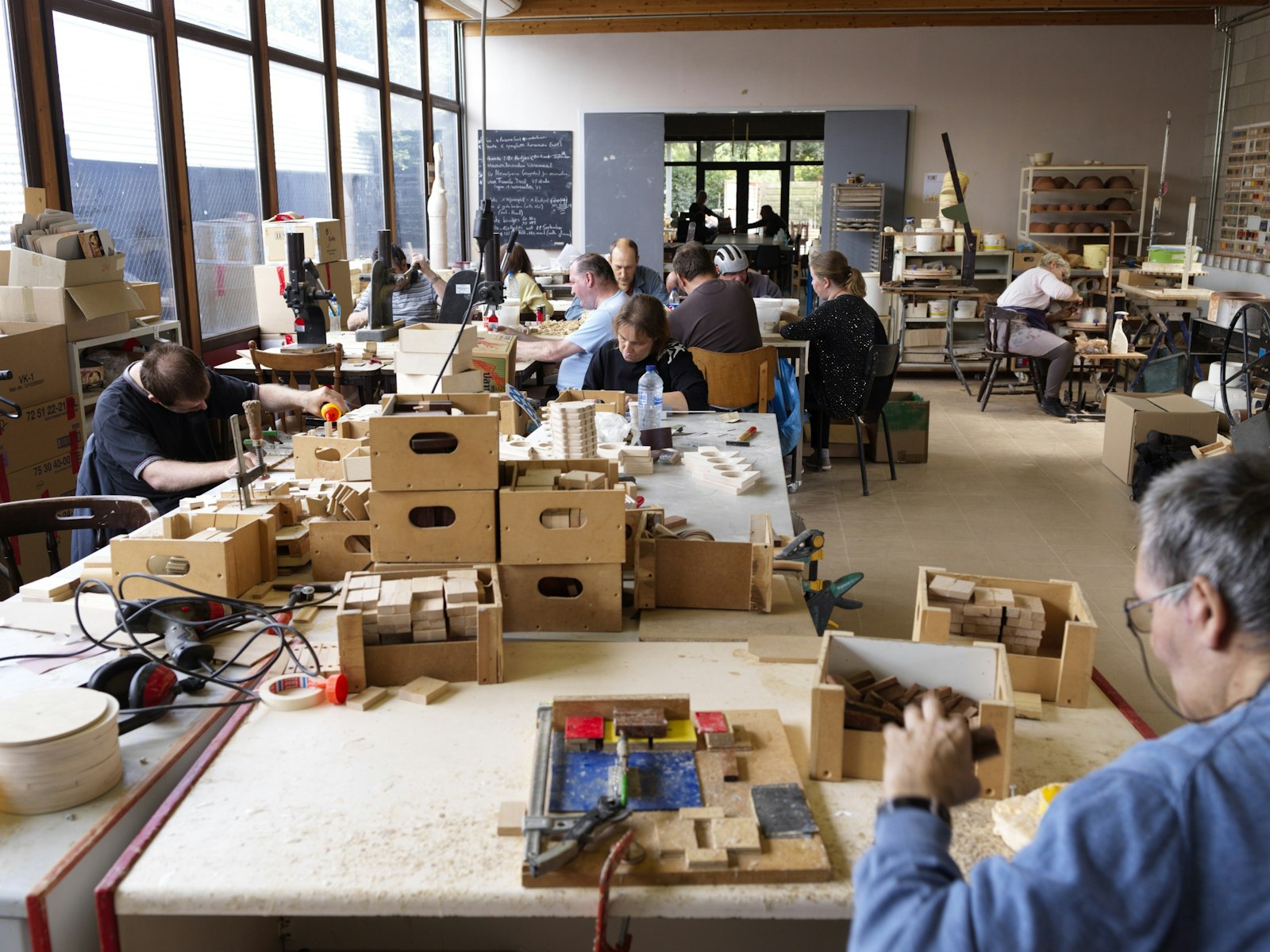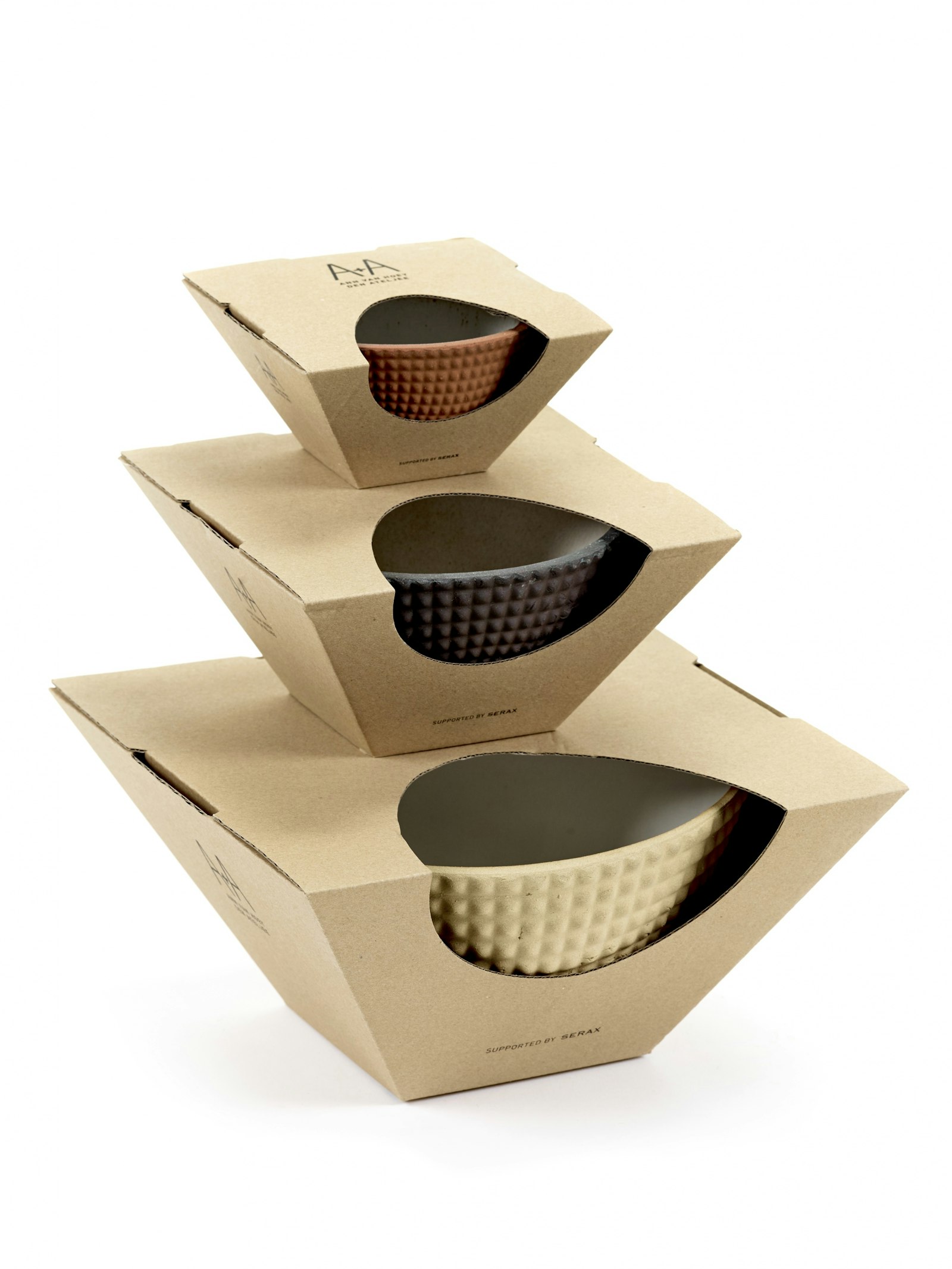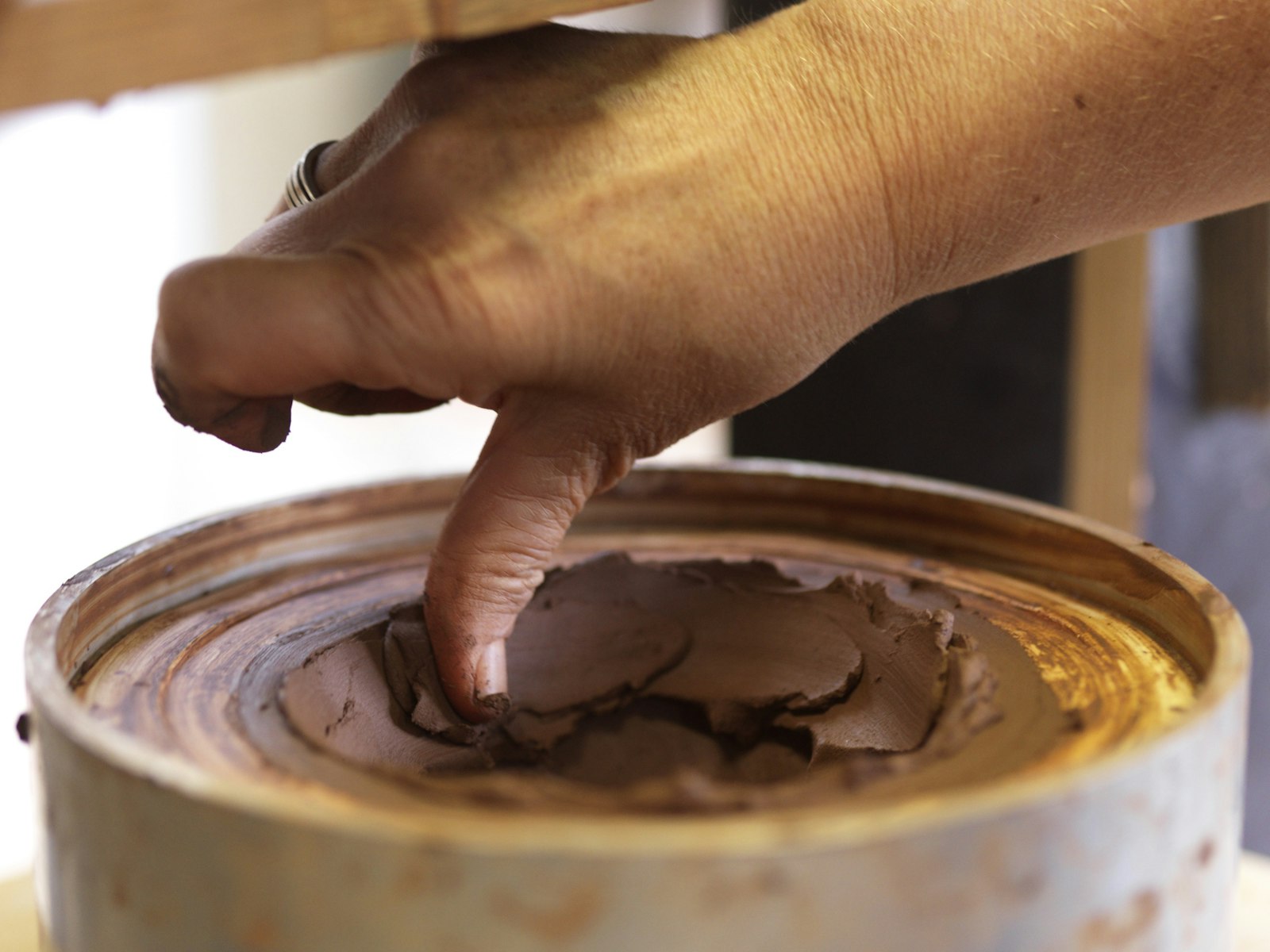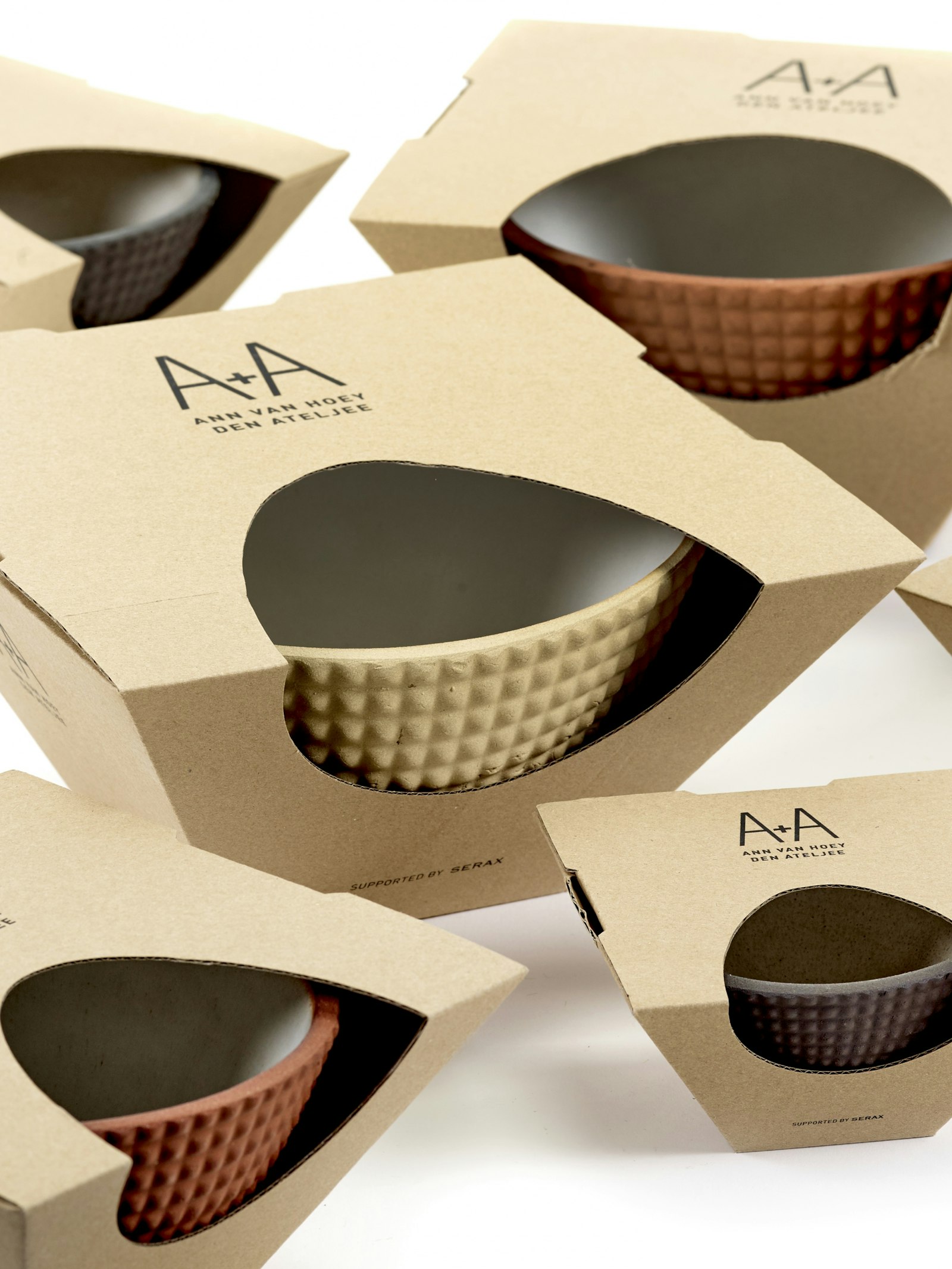de Velde
A+A Bowls
The 'A+A' bowls of Ann van Hoey are digital designed, hand-crafted in a limited edition at an artisan workshop and still professionally commercialised.
It's the result of a unique example of co-creation in the world of ceramics, namely a collaboration between herself, Serax, Peter Donders and 'Den Ateljee', a workplace for adults with disabilities.
The A+A bowls are designed digitally and hand-crafted in a limited edition at an artisan workshop, yet still professionally commercialised – a unique combination in the world of ceramics. The finish is of the highest quality, even the packaging.
Ann Van Hoey is the designer and driving force behind the project, which originated in an admiration for designers who actually make a difference with their design. She contacted Den Ateljee, a day centre for adults with special needs in Wezemaal. Their outward-looking operation attaches a great deal of importance to the marketability of their products.
Due to the recent changes in legislation and adjusted subsidies, Den Ateljee was also looking for a way to generate more revenue. Originality is beneficial to the marketability of the products that emerge from Den Ateljee, stimulating the job satisfaction, personal well-being and social recognition of the creators. They were immediately enthusiastic to commence collaboration. A partnership that would lead to the production of a collection of three stoneware bowls in three different sizes and colours, in accordance with my 3D design. The collection was given the apposite name A+A, referring to both Ann and Den Ateljee. As soon as it was up and running the project was selected for the 8th Design Triennial “Hands on Design” in Design museum Ghent.
For this project, Ann designed a seamless bowl that fits the limited possibilities of the manual Jigger and Jolly machine at Den Ateljee, with a level of difficulty adjusted to the creators. To give the rather classical utility a more contemporary look, the design of the bowls was digitalised by Peter Donders using Rhino3D. This enables the proportional scaling of the same shape into three different sizes and prepares the design for 3D printing at Materialise. First, a silicon mould is made on the basis of the plastic 3D print. Then, a plaster mould is made that will be the basis for the production process.
Stoneware clay in three colours (red, brown and beige) is pressed against the inner wall of the mould and the creator removes the excess material with a matrix (template) attached to a lever. The inside is finished with a white, shiny glaze. In spite of this semi-standardised process, every single bowl displays a certain singularity, not only because of the handicraft, but also because of the uniqueness of the creators and their special needs. Sometimes, the clay is not pressed completely into the mould, causing little wrinkles, grains and tears on the sides. The thickness of the sides, or the coverage of the glazing may also vary.
As you can see, these bowls, originally produced in a limited edition of 1,000 pieces, are a true ‘Gesamtkunstwerk’, for which Ann deploy her artisan knowledge in a broad social process. After all, it is an entire network of partners who work together to realise the design. Drawing the ideas in 3D (Peter Donders), printing and producing the moulds (Materialise and Den Ateljee), technically refining and choosing the materials (Den Ateljee), producing the line by hand (the creators at Den Ateljee), and commercialising and distributing the end product (Serax) are all crucial in the journey of the bowls from the design to the customer’s home. That is precisely the strength of this project. Ann offers her artisan soul and designer language, and her network takes care of the necessary technical refinement, artisanal manufacturability, and commercialisation of this unique project.








